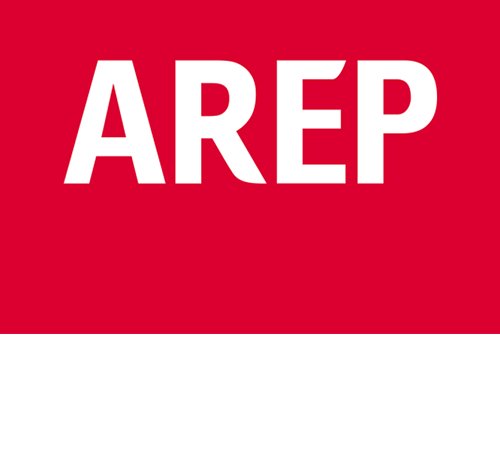AREP are a multidisciplinary design office encompassing a highly diverse range of technical expertise. We got the chance to speak with Etienne Tricaud, CEO of AREP and world-renowned Architect of the Yearin his own right, to find out more about his company, as well as his philosophy on urban and transportation design.
More than ever before, movement is an integral part of our everyday lives and people want to be able to take full advantage of the time spent traveling from one place to another. The evidence is all around us: people work on their computers on the train and are permanently connected to their offices, homes and families through the portable tools they carry with them.
Thus, modern urban and transportation design has to accompany people, and simplify their movement through the city. Given that virtual reality is increasingly important in our day-to-day lives, the aim has to be to facilitate movement by providing sensations and encounters that belong to the real rather than the virtual world. Providing reference points, indicating the routes to be taken, introducing daylight right down into the depths of the earth, creating environments able to coexist with their natural settings, these and other elements have to form the basis of the conceptual design work conducted in regard to public spaces.
With all of these aspects in mind, we adopt a very holistic approach to the design process. Among our services include town and regional planning, architecture, engineering and interior design. This allows us to execute programmes at every scale, from designing everyday objects to developing metropolitan areas. This unique approach is based the company’s shared methods and values, which is applied in the research and study specific to each discipline. In turn, this across-the-board approach contributes towards honing our skills and operating in an efficient and professional manner.
Of course, every project is different which is why our approach varies and is guided by the site’s use and context. Attentive to its function, history and geography, and attuned to the local culture and heritage, AREP’s teams design spaces which meet both the priorities of the principals and the expectations of today’s society, in terms of lifestyles, sustainability, and site identity.
The development of large metropolitan or regional areas has until now relied on territorial planning mainly based on a three-pronged approach: socio-economic, legal (town planning law), and technical (creation of major infrastructures). Devising a project-driven method for such developments means calling on design teams to establish a spatial synthesis of available data (objective or subjective, quantifiable or sensitive), in order to give meaning and coherence to a multidisciplinary approach. This new type of approach is gaining widespread acceptance in France and other countries. The link between mobility and urban development is central to it, and informs AREP’s work. We apply this approach on seven different scales, which are: large areas, towns and cities, districts, public spaces, complex urban sectors, buildings as well as interiors, furniture, fittings.
When it comes to projects such as these, communication is key. It is through a dialogue that projected uses are defined and the space is organised. The role played by AREP goes well beyond a response to a predefined programme. It contributes to the simultaneous emergence of a diagnosis, a programme and a project, and to shaping the role of the stakeholders and partners it works with.
Furthermore, the design of a project is based on a rigorous evaluation process covering the needs, evolving uses, and engineering requirements of the site. That design process is supported by extensive experience in designing buildings with major functional constraints, particularly busy focal points within complex urban programmes such as intermodal transport hubs, amenities, and mixed programmes. AREP’s architecture teams have tackled a wide variety of programmes of this type. In all cases the number one priority has been to submit a project suited to the needs, lifestyles and quest for identity of contemporary society.
With 2017 on the horizon, we are very optimistic about the future and are confident that we will continue to succeed. In term of development, AREP has a dynamic growth policy on global markets and hopes to continue on this line.
At the moment, AREP are designing projects mainly in Vietnam, China, India, United Arab Emirates, Qatar, Morocco, Russia and France. In the field of architecture, Asia and the Middle East have provided us with most of our work abroad and AREP hopes to continue to develop in more countries. In total, AREP has an 850-strong workforce from over thirty nationalities, and the AREP’s portfolio extends to over 800 projects in France and other countries around the world. We hope that 2017 will allow us to grow and build on our success.
Company: AREP
Name: Thépot Judith
Email: [email protected]
Web Address: www.arep.com
Address: 16 avenue d’Ivry – 75647 Paris Cedex 13 – France
































